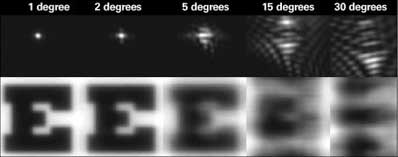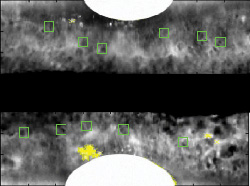REGISTRATION IS AN IMPORTANT and developing issue for wavefront-guided LASIK treatment. Systems today use varying methods of registration, such as limbus and iris registration. "It is important to have some type of registration performed," says Brian S. Boxer Wachler, MD, an assistant professor at UCLA"s Jules Stein Institute. "When patients have their wavefront scan acquired they are in an upright sitting position, yet when they lie down for treatment, the eye may have some cyclorotation.
"If a surgeon can not or does not compensate for that cyclorotation by also knowing where to rotate the treatment (so it is in the same position on the eye as when the patient was sitting upright), then the treatment will be off by varying degrees because of the rotational component," he says. "A lot of times, the wavefront aberrations can be affected if the rotation application of the treatment is off from the true position," he explains.
"If a surgeon can not or does not compensate for that cyclorotation by also knowing where to rotate the treatment (so it is in the same position on the eye as when the patient was sitting upright), then the treatment will be off by varying degrees because of the rotational component," he says. "A lot of times, the wavefront aberrations can be affected if the rotation application of the treatment is off from the true position," he explains.
Dr. Boxer Wachler says Alcon was the first to define the term "registration" and it was essentially the first to publicize the importance of controlling this parameter. Other companies, such as Visx Inc. (Santa Clara, Calif.), have also developed their own form of registration, known as iris registration.
Dr. Boxer Wachler primarily uses the Alcon LADARVision system, which employs limbus registration. However, he has used the Visx laser as well.
Limbus Registration
Ronald R. Krueger, MD, also uses Alcon"s LADARVision system. "Limbus registration is very effective," he says. "Now Alcon has auto-registration, which automatically identifies the structure so you can get better predictability and uniformity of types of capture. They are also working on scleral-vessel registration so the rotational aspects can be compensated for," says Dr. Krueger, medical director at the Cleveland Clinic Foundation Hospital.
 |
| Error induced from cyclotorsional movements in an eye with 1 D of cylinder. |
"The real test of good registration is how well you do on custom retreatments, because those are the really aberrated eyes, and those aberrations are so sensitive that if you are off a little bit you are going to get lots of new aberrations somewhere else. So far in my hands it has worked well, I have been able to help some people who have had problems before," Dr. Krueger says.
The autoregistration uses the same principles as the limbus registration. "The system "sees" where the limbus is, and then will over lay it," says Dr. Krueger. "Surgeons still have an opportunity to adjust for rotation and registration if necessary on the first of the five captures with the wavefront device," says Dr. Krueger. He notes that this form of registration is supposed to increase the accuracy of alignment by fourfold. "Automatic limbus registration makes things faster and a little easier. Scleral vessel registration may make it even better in the future," he says.
Iris Registration
Visx identified the need for iris registration and developed its technology, which is currently in use internationally. The company hopes for approval for iris registration in the first quarter of 2005.
"Alignment and registration are very important because lack of cyclotorsional registration will induce errors," explains Julian Stevens, Moorfields Eye Hospital, London.
Iris image registration permits compensation for cyclorotational errors and permits verification of patient ID and re-registration for intraoperative cyclotorsional movement, he notes.
Jeffrey Machat, MD, of TLC Vision in Toronto, also has experience with Visx"s automated iris registration. He says, "In pharmacologically dilated eyes, cyclorotation can be 15 degrees or more. Upright wavefront assessment but supine laser ablation can cause cyclo-misalignment and patient movement also can produce cyclotorsion."
Error induced from cyclotorsional movements in an eye with 1 D of cylinder can be significant. For registration of ablations, WaveScan exams are acquired with the patient in the upright position. The laser ablation is performed with the patient in the supine position and with one eye covered.
The iris registration technique calculates the torsional angles from multiple measurements. "Sophisticated algorithms calculate ablation torsional angle," says Dr. Stevens, who notes that the algorithms compensate for pupil distortion, axial misalignments, changes in pupil size, and reflections. For example, the algorithm compensates for pupil center shift by using the iris outer boundary as a static reference.
"For iris registration, the system "unwraps" the iris in both images and selects multiple reference points," says Dr. Machat. "Because the iris pattern is unique to each patient, the iris regulation system can find most prominent iris features for each eye."
Iris registration challenges include the need to account for different camera appearances of an iris with the WaveScan versus Visx laser, as well as different lighting, pupil size and shape, angle, and flap or epithelial debridement.
|
|





